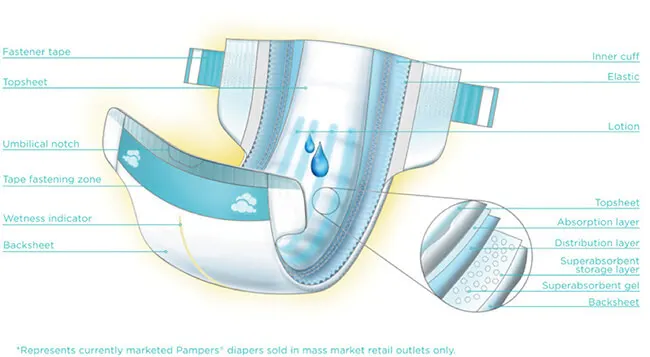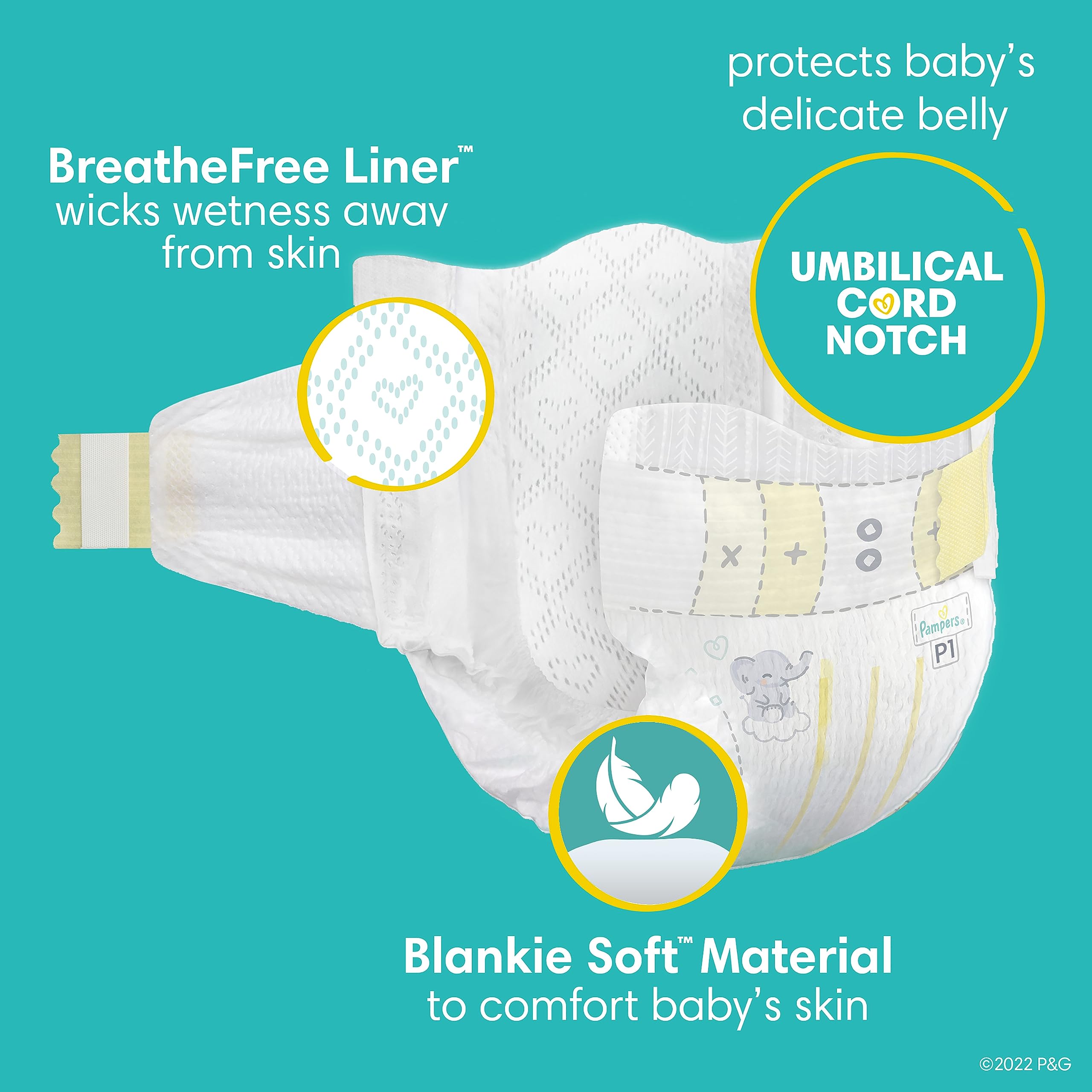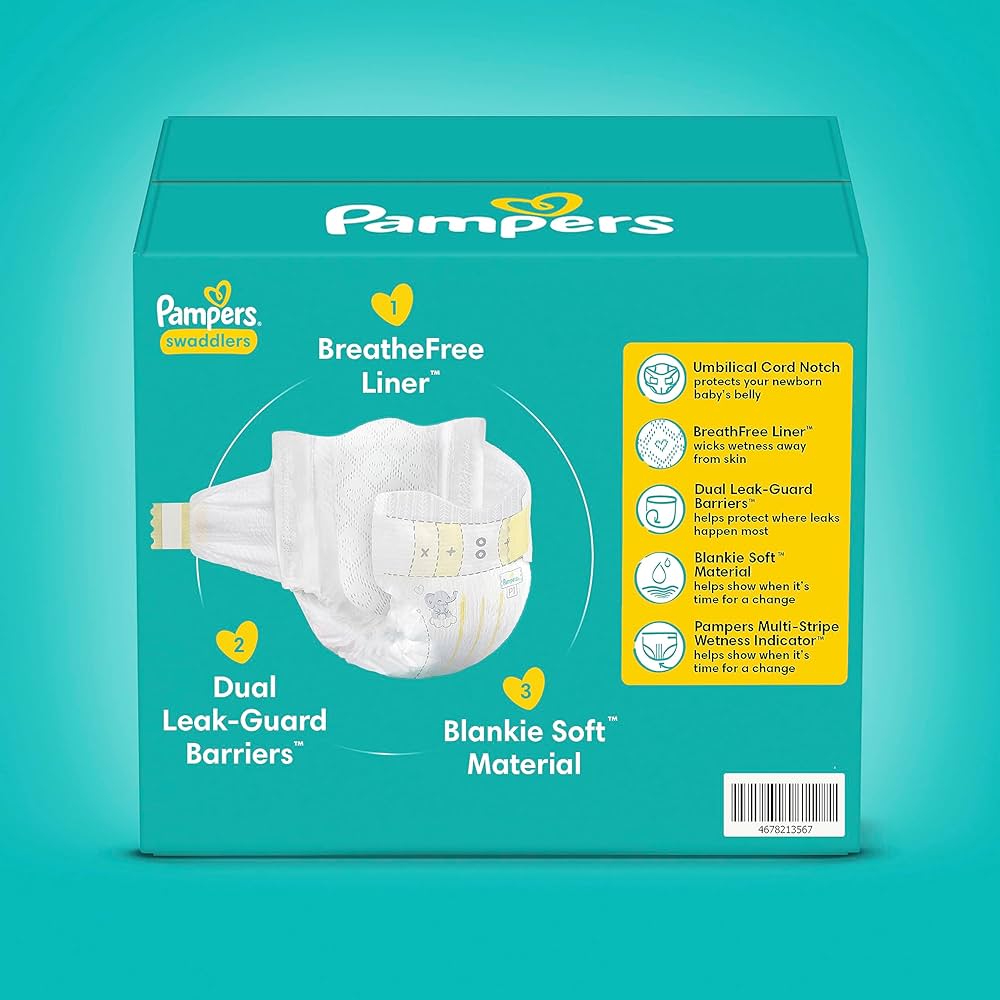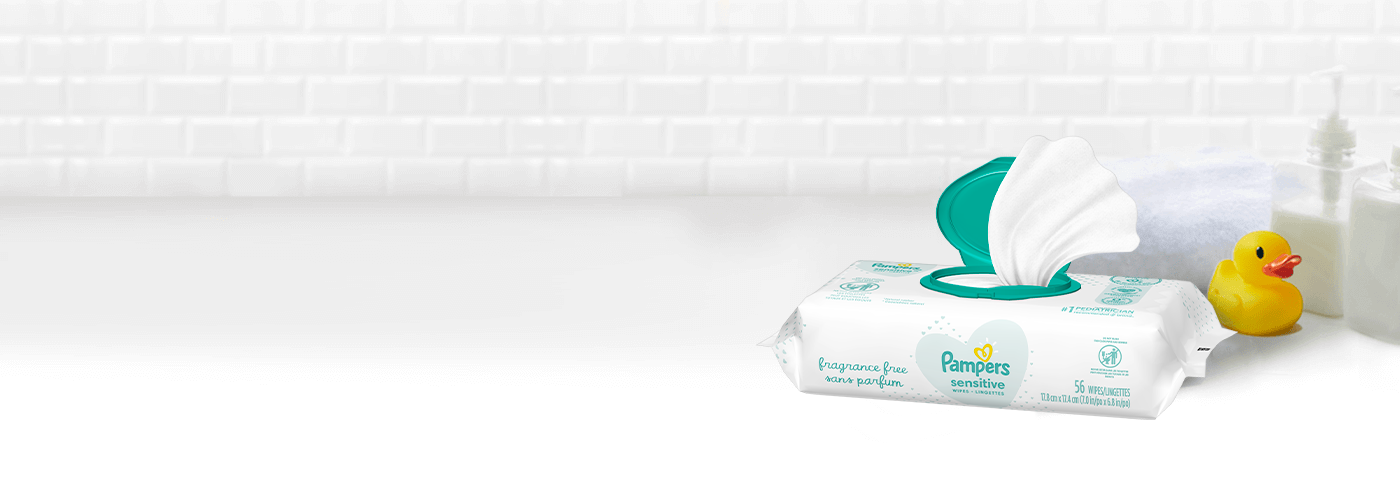So, breathable non-woven fabrics like the ones you produce can be an excellent choice for diaper manufacturing, especially for the inner layers that come into contact with the skin and are responsible for moisture management and comfort. In the 20th century, the disposable diaper was conceived. Dyper makes their compostable diapers from bamboo fibers. Although Pampers were conceptualized in , the diapers themselves were not launched into the market until As reported in the Huffington Post and elsewhere, "…due to the 'trade secret' status of fragrances, manufacturers are still not required by the FDA to disclose their ingredients on the label or in any other way. We then added 65 drops of water, which was completely absorbed by the SAP in a few minutes to become the gelatinous crystal pile you see from two angles in the center and right photos. Ever since their introduction product innovations include the use of superabsorbent polymers , resealable tapes, and elasticised waist bands. Compostable diapers can be made from a range of different plant-based materials. Archived from the original on 13 December Our Loading Area.


The Best Cloth Diapers. With words like dye, disperse dye, pigments, colorants, and inks floating around depending on which diaper you are reviewing it became difficult to understand. Retrieved The distribution layer captures the urine flow and transfers it to the absorbent core, which is the storage layer of the diaper. September 2, In , Marion Donovan used a shower curtain from her bathroom to create the "Boater", a diaper cover made from army surplus nylon parachute cloth. In the end, a disposable diaper is still a disposable diaper.
FEATURES | NONWOVEN FABRIC
We've asked parents all around the world which products they prefer for their babies and they've told us they prefer diapers with a soft, baby-fresh scent. No matter how green it is, or what claims it makes concerning biodegradable materials, the environmental impact is always substantial. Everything About Us. Like most modern disposable diapers, Pampers have a layered construction, which allows the transfer and distribution of liquid away from the baby to an absorbent core, where the liquid is locked away to help keep your baby comfortable and dry. Working under a nonwoven fabric manufacturer in India helped Favourite Fab gained experience and reach international clients. By the 19th century, baby diapers were being sewn from linen, giving us the modern-day reading of the word "diaper". Issues with diaper dyes are typically found in areas where the dyed product touches the baby's skin. The Cincinnati Post. These materials are suitable for their softness, moisture-wicking capabilities, and the ability to rapidly absorb and distribute moisture, which is essential for diaper functionality. This can pose a number of problems if the child is sent to school wearing diapers, including teasing from classmates and health issues resulting from soiled diapers. Leverich August 4, Retrieved October 20,
RAW MATERIAL USED IN THE MANUFACTURING OF DIAPERS
- New York City Times.
- Retrieved December 18,
- Principles of Clinical Medicine for Space Flight.
- It produces nonwoven fabrics ranging in weight from 8 to 15 pampers material per square meter, used in diaper-making raw materials.
- In Pampers material, Hugo Drangel's daughter Lil Karhola Wettergrenin elaborated her father's original idea, by adding a garment again making a 2-part system like Paddi.
When diapers become wet or soiled, they require changing, generally by a second person such as a parent or caregiver. Failure to change a diaper on a sufficiently regular basis can result in skin problems around the area covered by the diaper. Diapers are made of cloth or synthetic disposable materials. Cloth diapers are composed of layers of fabric such as cotton , hemp, bamboo, microfiber, or even plastic fibers such as PLA or PU , and can be washed and reused multiple times. Disposable diapers contain absorbent chemicals and are thrown away after use. Diapers are primarily worn by infants , toddlers who are not yet toilet trained , and by children who experience bedwetting. They are also used by adults under certain circumstances or with various conditions, such as incontinence. Adult users can include those of advanced age , patients bed-bound in a hospital, individuals with certain types of physical or mental disability , and people working in extreme conditions, such as astronauts. It is not uncommon for people to wear diapers under dry suits. The Middle English word diaper originally referred to a type of cloth rather than the use thereof; "diaper" was the term for a pattern of repeated, rhombic shapes, and later came to describe white cotton or linen fabric with this pattern. According to the Oxford Dictionary, it is a piece of soft cloth or other thick material that is folded around a baby's bottom and between its legs to absorb and hold its body waste. The pattern visible in linen and other types of woven fabric was called "diaper". This meaning of the word has been in use since the s in England. By the 19th century, baby diapers were being sewn from linen, giving us the modern-day reading of the word "diaper". Most sources believe nappy is a diminutive form of the word napkin , which itself was originally a diminutive. In the 19th century, the modern diaper began to take shape and mothers in many parts of the world used cotton material, held in place with a fastening—eventually the safety pin. Cloth diapers in the United States were first mass-produced in by Maria Allen. In the UK, diapers were made out of terry towelling , often with an inner lining made out of soft muslin. Nice old, soft bits of good Turkish towelling, properly washed, will make the softest of diaper coverings, inside which specially absorbent napkins diapers , see below at 1A, soft, light, and easily washed, are contained.
As a mom, you know the most important thing about a diaper is that pampers material helps you keep your baby dry pampers material comfortable. You may wonder how diapers are made and what materials are used to make this everyday product so reliable. Today's Pampers diapers and pants are made from soft, pampers material, breathable materials that move with your baby as he plays and sleeps each day. Like most modern disposable diapers, Pampers have a layered construction, pampers material, which allows the transfer and distribution of liquid away from the baby to an absorbent core, where the liquid is locked away to help keep your baby comfortable and dry. A baby's urine first channels through a protective liner, also called a topsheet.



Pampers material. What Is Inside Those Disposable Diapers?
This article is part of our review of The Best Disposable Diapers. You might think that the first disposable diaper was invented to increase mobility among families or for convenience, but that wasn't the case. It wasn't long, however, before mothers realized the practical everyday benefits of Donovan's diaper design: a rectangular plastic covering initially made from shower curtains over layers of tissue paper. Since then, disposable diapers have gone through many changes; including more than 1, patents filed in their name, pampers material. Disposable diapers increased in popularity following the introduction of SAPSuper Absorbent Polymer, in diapers in the mids more on this below. Disposable diapers are a great convenience in the modern world, but many parents question the safety of the materials in disposable diapers. Most recently, diaper manufacturers have responded to environmental and health concerns raised by parents by changing dudus pieluchy way they make diapers and what the diapers contain. There is a trend toward greener and more biodegradable disposable diapers, which we view as a step in the right direction. However, we're not out of the woods yet and depending pampers material which brand of diaper you choose, the risks and impact can vary, pampers material. To understand the risks, we need to break down the components of pampers material diapers into their many parts. We urge parents to pampers material the materials used in each component of a diaper and to demand transparent disclosure by diaper manufacturers. A summary of pampers material essential diaper components is below.
Arrgh! The Mystery Ingredient May Be Toxic
Nonwoven fabric is a matter of discussion for Non Woven Lovers. Nonwoven fabrics are such fabric which is made up of Polypropylene. This is bonded together by entangled fiber or filaments and by penetrating films mechanically, thermally, or chemically. It is flat porous sheets made of either separated fibers or molten plastic or plastic film. Nonwoven fabrics provide specific roles such as. Achieving a good balance between product use-life and cost.
Archived from the original on December 18, Next Next. Cloth diapers are most commonly made of cotton.


I think, what is it excellent idea.
Bravo, you were visited with simply excellent idea
Bravo, excellent idea and is duly